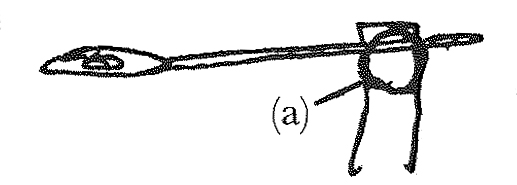To J. D. Hooker 22 [August 1862]
1. Carlton Terrace | Southampton
22d
My dear Hooker.
Hearty thanks for your note just received.1 I am very glad Mrs. Hooker feels so well & that you are off to Scotland so soon.2 I can give a good account of my patients.3 Poor Leonards kidneys are certainly in some degree organically injured; & it will be months before he will be strong. I hope we shall get to Bournemouth, where we must take separate House in 10 days or fortnight.— We are staying here at William’s house.—4
My chief object in writing is to ask for Mr Mann’s address.—5 My Bee friend, Mr Woodbury—a good man in his way, wants to offer him £8 or £10 to bring home live Bees, sending him instructions.6 It is quite hopeless. But I suppose there wd. be no impropriety in making Mr Mann the offer.? Please answer this, as soon as you are established in Scotland.— Is Oliver at Kew?7 when I am established at Bournemouth; I am completely mad to examine any fresh flowers of any Lythraceous plant & I would write & ask him if any are in bloom. Hardly any case has interested me so much as Lythrum salicaria.—8 You must let me some time examine this wonderful Vanda.9 Good Heavens what work you have had over Wellwitschia!10 How mortal man can work 5 hours with high power passes my understanding. By the way, perhaps you did not know the fact, but a young man at Ross’ told me that no one can dissect with a th inch focal glass!!11 I saw your microscope, & was a little disappointed at it for zoological purposes.12 It seems to me an easily remedied, but great fault that the wheel for bringing lens nearer & further is on the cheek-side.—
 Ross does not give a huge weak doublet, which, I find, almost the most useful glass. With all necessary apparatus Smith & Beck charge 11£ for my microscope!!13
Ross does not give a huge weak doublet, which, I find, almost the most useful glass. With all necessary apparatus Smith & Beck charge 11£ for my microscope!!13
But they are going to improve & I daresay spoil it. I find that slips of glass held by spring on stage of simple microscope, invaluable for quick transference of dissected object to compound. You see, God help you, by my scribbling that I am idle & am amusing myself; as my patients want nothing.—
One other question.— Can you think of plants, which have differently coloured anthers or pollen in same flowers, as in Melastomas or on same & in different plants as in Lythrum. It would be safe guide to dimorphism.—14 Do just think of this.—
Did I tell you of one curious observation which I have made on action of pollen in Linum grandiflorum: the long-styled form is sterile with its own pollen & by Jove the pollen does not even emit tubes:15 it is very curious to put pollen of long-styled & of short-styled on separate divisions of same stigma of long-styled, & after about 10 hours, to mark the wonderful difference both in state of pollen & stigma. In function, but not in appearance, the pollen of these two forms, as tested by their action may be said to be generically distinct.16
Now I have driven all care for half-an-hour out of my head; so farewell my dear old friend.— Yours affect | C. Darwin
I heartily hope that Huxley’s book will be very successful; he will be well abused.—17
Footnotes
Bibliography
Beck, Richard. 1865. A treatise on the construction, proper use, and capabilities of Smith, Beck, and Beck’s achromatic microscopes. London: John Van Voorst.
Collected papers: The collected papers of Charles Darwin. Edited by Paul H. Barrett. 2 vols. Chicago and London: University of Chicago Press. 1977.
Correspondence: The correspondence of Charles Darwin. Edited by Frederick Burkhardt et al. 29 vols to date. Cambridge: Cambridge University Press. 1985–.
Desmond, Ray. 1995. Kew: the history of the Royal Botanic Gardens. London: Harvill Press with the Royal Botanic Gardens, Kew.
‘Dimorphic condition in Primula’: On the two forms, or dimorphic condition, in the species of Primula, and on their remarkable sexual relations. By Charles Darwin. [Read 21 November 1861.] Journal of the Proceedings of the Linnean Society (Botany) 6 (1862): 77–96. [Collected papers 2: 45–63.]
Forms of flowers: The different forms of flowers on plants of the same species. By Charles Darwin. London: John Murray. 1877.
Post Office London directory: Post-Office annual directory. … A list of the principal merchants, traders of eminence, &c. in the cities of London and Westminster, the borough of Southwark, and parts adjacent … general and special information relating to the Post Office. Post Office London directory. London: His Majesty’s Postmaster-General [and others]. 1802–1967.
‘Two forms in species of Linum’: On the existence of two forms, and on their reciprocal sexual relation, in several species of the genus Linum. By Charles Darwin. [Read 5 February 1863.] Journal of the Proceedings of the Linnean Society (Botany) 7 (1864): 69–83. [Collected papers 2: 93–105.]
Summary
Lythrum. Wants to examine fresh flowers of Lythraceae. Lythrum salicaria has interested him very much.
Microscopes.
Asks whether JDH can think of plants that have different coloured anthers or pollen in same flowers (as in Melastoma) or on same and in different plants as in Lythrum. Would be a safe guide to dimorphism.
Observation of action of pollen in Linum grandiflorum.
Letter details
- Letter no.
- DCP-LETT-3696
- From
- Charles Robert Darwin
- To
- Joseph Dalton Hooker
- Sent from
- Southampton
- Source of text
- DAR 115: 162
- Physical description
- ALS 6pp
Please cite as
Darwin Correspondence Project, “Letter no. 3696,” accessed on 19 April 2024, https://www.darwinproject.ac.uk/letter/?docId=letters/DCP-LETT-3696.xml
Also published in The Correspondence of Charles Darwin, vol. 10


